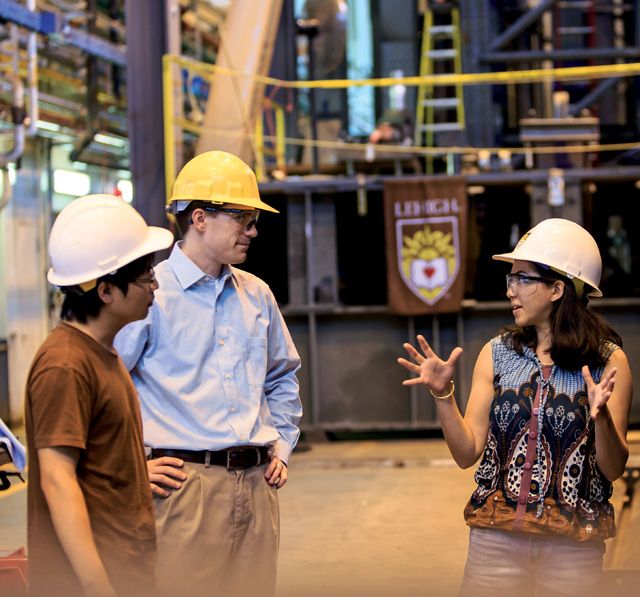When analyzing a structural element’s ability to withstand the effects of a blast load, many engineers use a method called “single degree of freedom,” or SDOF.
This simplifies the element down to its most basic form—a single mass, spring, and damper. These analyses typically take little time to run and are capable of reasonably modeling realistic behavior in many cases.
The method then posits that a fast-moving blast load—like the kind that affected structures in the vicinity of the Murrah Federal Building in Oklahoma City following the terrorist attack of 1995—will bend the element into the same shape as a static load.
“That assumption isn’t bad for a wide range of blast loads,” says Spencer Quiel, P.C. Rossin Assistant Professor of Structural Engineering, “but as the element gets closer to the blast, that bend tends to become more irregular.”
Quiel says that as much as 75 percent of blast analysis in professional practice is conducted using the SDOF method, but he suggests the industry needs to recognize its limitations. If heeded, models would be developed to better capture irregular bending. Doing so, he says, would ultimately pave the way for safer and more economical structural design.
To achieve this, he has collaborated closely for the last three years with former colleagues at Hinman Consulting Engineers, the San Francisco-based structural engineering firm and global leader in “protective design” where Quiel worked before joining the Lehigh faculty.
“Working with companies, even in an advisory function, helps to keep researchers grounded,” Quiel says.
That’s ultimately why Quiel went to work at Hinman after completing his Ph.D. at Princeton studying fire resistance and the mitigation of resulting damage. When he arrived at Hinman, he and his colleagues began to pursue research and development possibilities that brought his knowledge to bear upon the area of blast mitigation.
“After grad school, I really wanted to branch out and learn some new things, and structural protection of government facilities, which Hinman does, always appealed to me from a service perspective,” Quiel says. “Nothing is ever blast-proof or fire-proof, but we have levels of resistance in every type of structure. To engineer structures or military, government employees, and private citizens that are as safe as they can be given for the resources we have, that’s one of the central reasons why I do what I do.”
Finding better ways to incorporate irregularities into blast analysis will do just that, he says, even if the end result means companies need to utilize a more complex model when appropriate.
While that might sound like an obstacle, Quiel is hopeful and sees the future of research in this space as a collaboration among industry, government, and academia.
Federal agencies and non-governmental foundations will always play an important role in funding engineering research, he says, because they give researchers the freedom to pitch ideas and identify what the challenges in the field are.
And companies, while their mindsets might be more narrow and driven by their business goals, are crucial to making sure research is applicable to today’s pressing challenges.
“As a researcher, industry engagement really makes you back up and see the bigger picture,” Quiel says. “Where is this going? Who’s going to use it? How will it impact the field? Is it influencing the field favorably or unfavorably? Does this fit within practice convention? Does it create a new paradigm or turn the industry on its head? Asking these questions during our research projects ensures that our work helps the industry move forward.”
Story by John Gilpatrick

